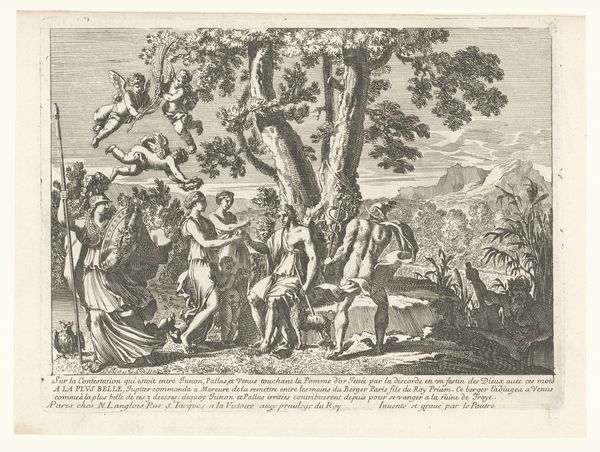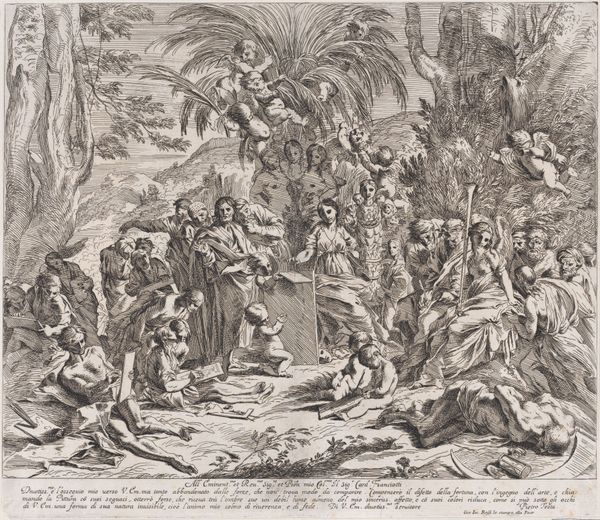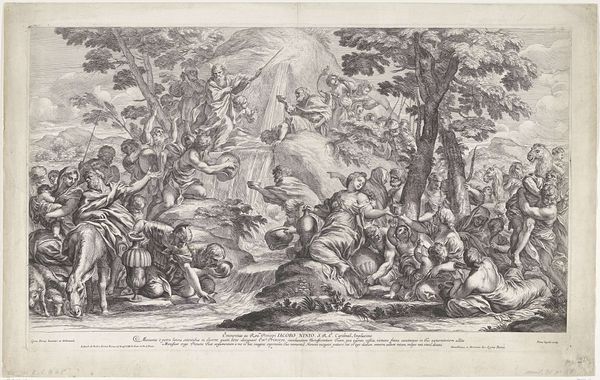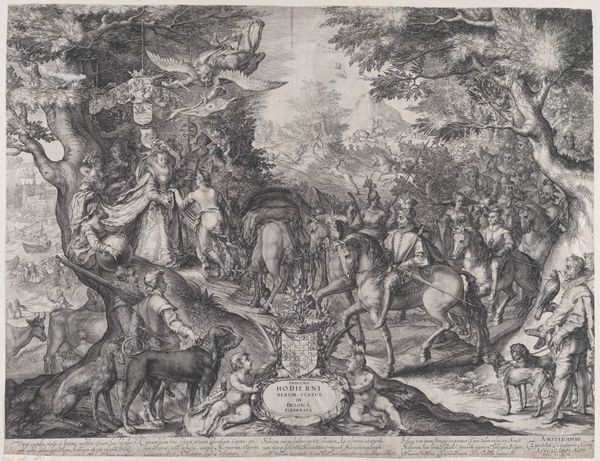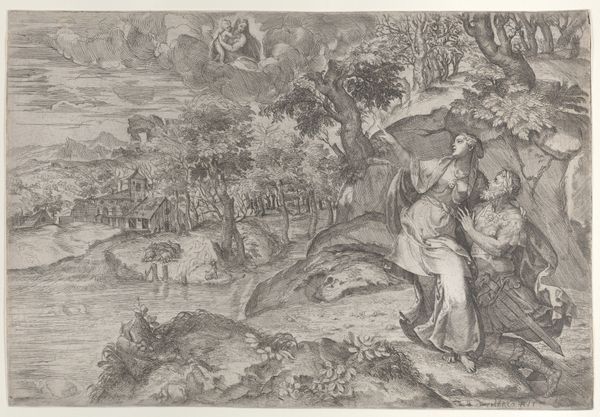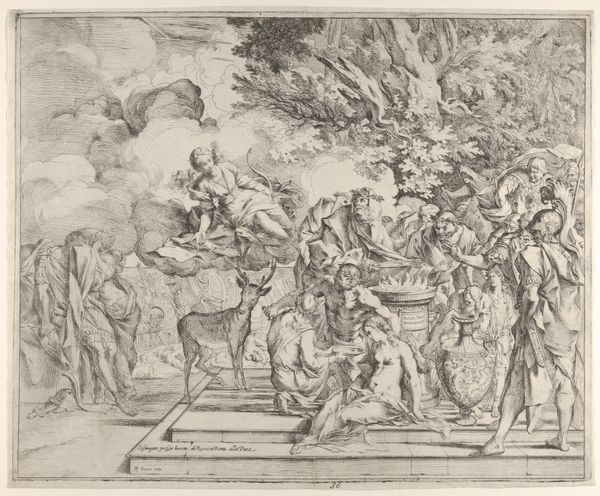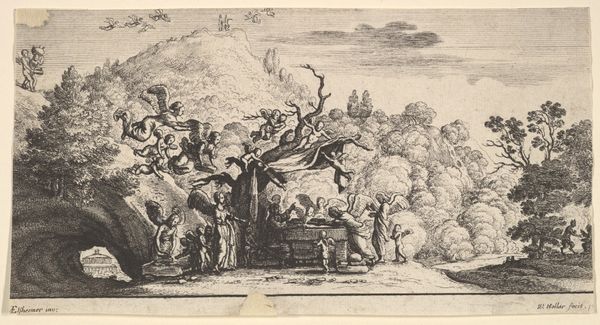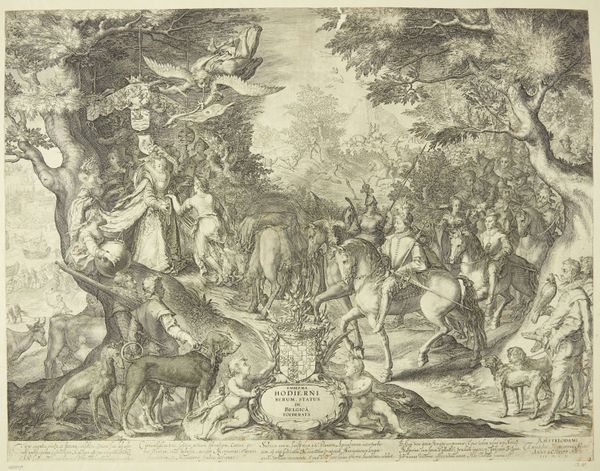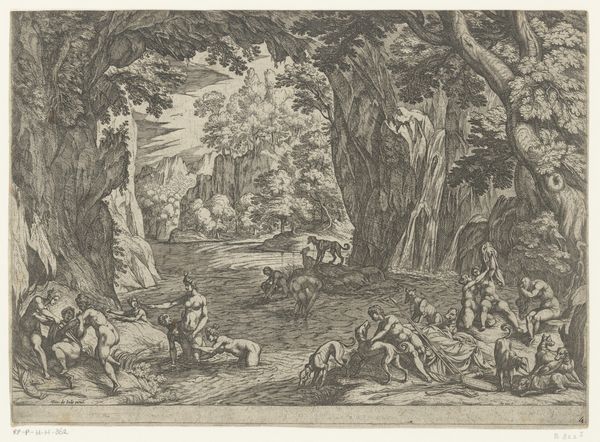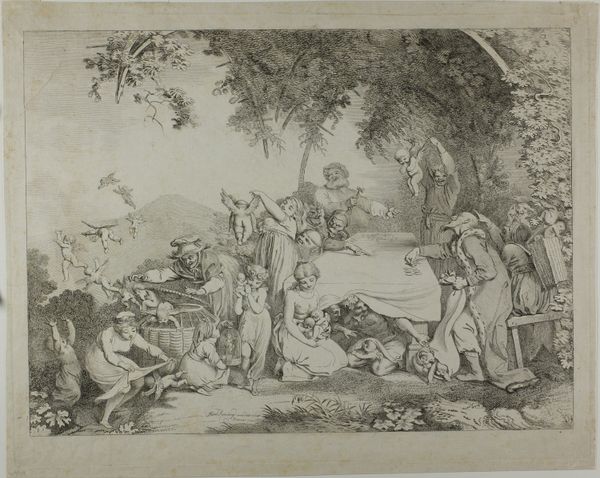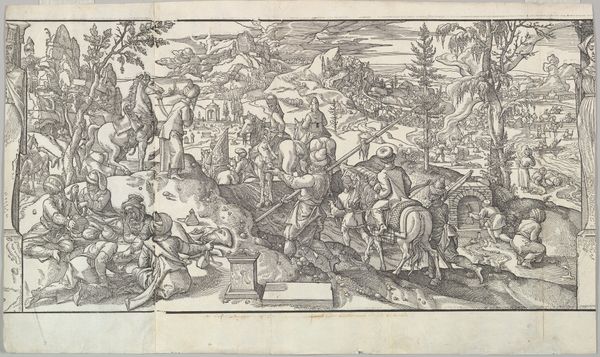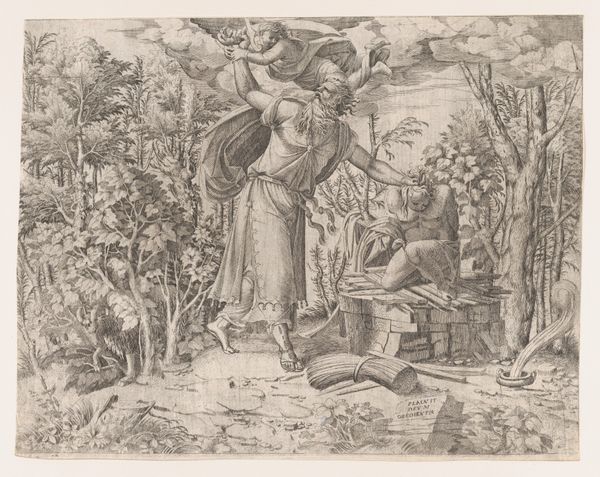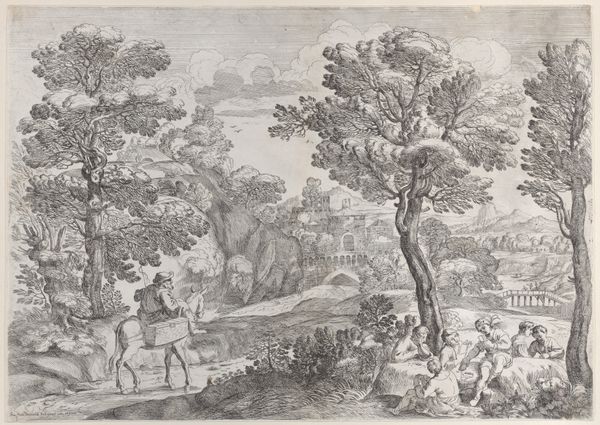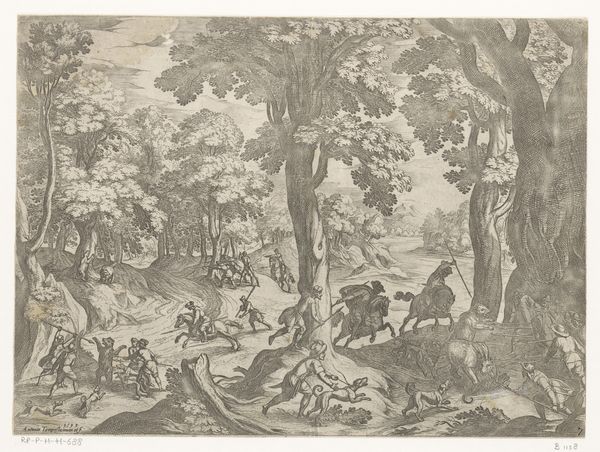
Stage set for the marriage of Ferdinand de' Medici and Christine of Lorraine in Florence in 1589; Apollo and the Python 1589 - 1592
0:00
0:00
drawing, print, ink, engraving
#
drawing
#
ink drawing
#
allegory
#
pen drawing
# print
#
mannerism
#
figuration
#
ink
#
line
#
history-painting
#
engraving
Dimensions: Sheet: 9 1/8 × 12 3/4 in. (23.2 × 32.4 cm)
Copyright: Public Domain
Curator: This delicate engraving, created with ink, portrays a stage set designed for the marriage of Ferdinand de' Medici and Christine of Lorraine in Florence. The artwork, dating between 1589 and 1592, is attributed to Agostino Carracci, a prominent figure of the era. Editor: The scene is incredibly striking, even with the aged paper. The stark contrasts create a very theatrical and tense atmosphere. The drama of Apollo battling Python amidst what seems to be an eager crowd...it's fascinating. Curator: Absolutely. It captures a spectacle staged during a pivotal moment of political alliance, demonstrating the Medici's power and prestige. Remember that this marriage aimed to solidify relations between Florence and France, a critical move given the religious wars plaguing Europe at the time. Editor: Looking closer, that’s what gets me: the performativity. It isn't just a depiction of a mythical fight; it's deliberately staged and observed, with the figures acting almost as a silent jury. You’ve got the violence above and the calm watchers below— what commentary does that produce about those marriages between royals that feel transactional or arranged. Curator: Precisely. The choice of Apollo, the god of light, reason, and the arts, triumphing over the monstrous Python would likely be intended to reflect the triumph of the Medici rulers, but what is interesting is how a moment that tries to signify goodness actually becomes terrifying. There is no benevolent victory without subjugation of an other. Editor: In a way it seems an apt metaphor. And what strikes me further, too, is the use of perspective: those neatly lined spectators fade quite quickly to obscurity behind the dragon like figure, while the battling gods are more clearly depicted and stand as more visible than their counterparts. It would appear the marriage, then, will remain central, whilst their supporters grow insignificant. Curator: It is a fascinating way to perceive such context. The historical context surrounding the actual political agendas, social performativity of theatre are essential tools of analysis for a contemporary reader to gain insight to the complex agendas driving events. Editor: Absolutely. It’s a stark reminder that art is rarely detached from the politics and power structures of its time, which we often struggle to connect with in present society. The way that it has tried to communicate strength instead offers complex reading.
Comments
No comments
Be the first to comment and join the conversation on the ultimate creative platform.
